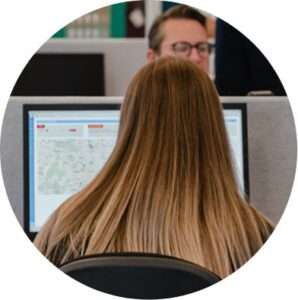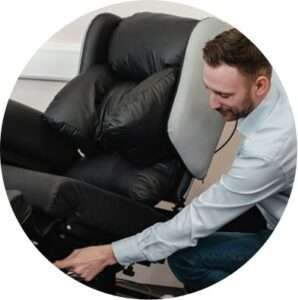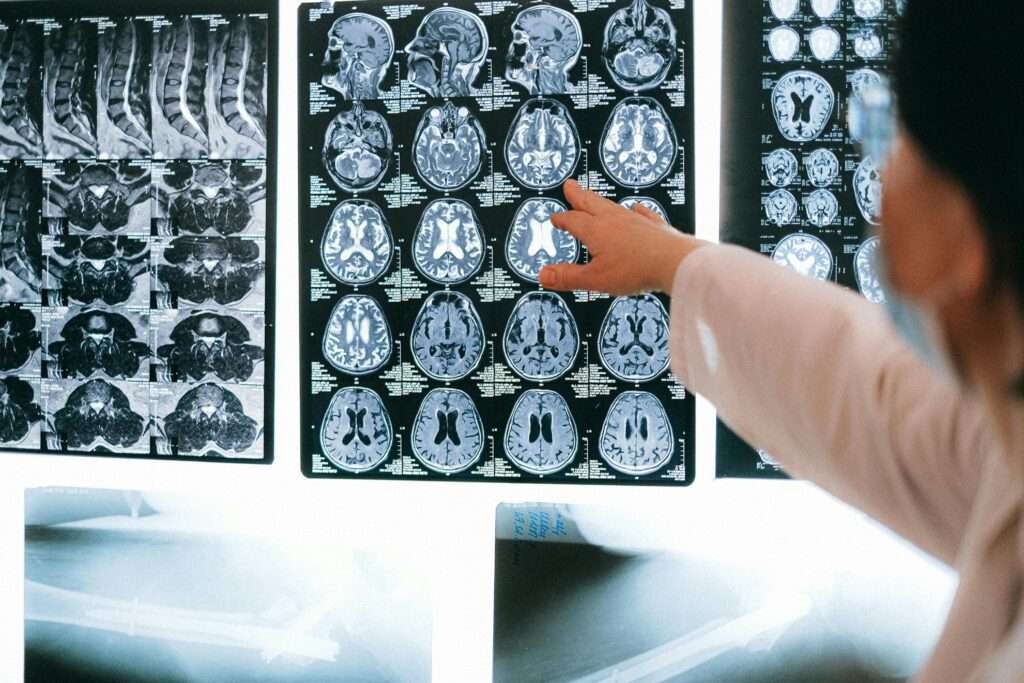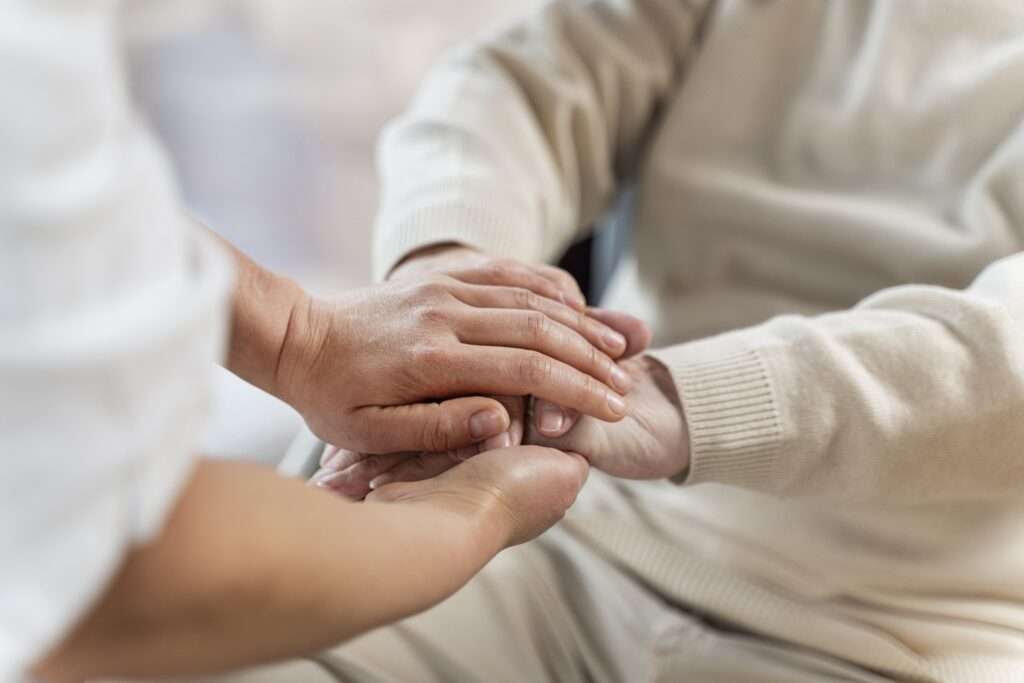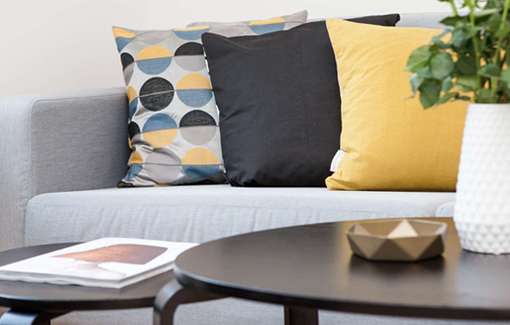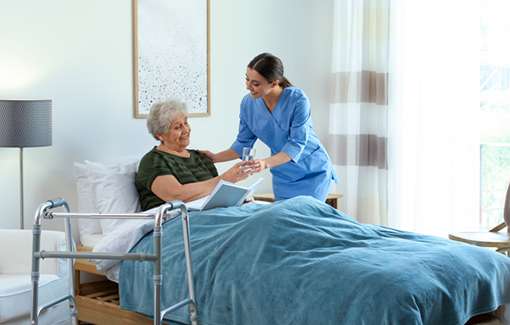In this clinical guide for OTs, we look at how to find the best chairs for people with Down’s Syndrome.
When looking at adapting environments for clients with Down’s Syndrome, we need to provide for their future growth, as well as supporting their occupational and learning needs.
Combining this with their clinical needs, we take a close look in this article at the best types of seating for Down’s Syndrome, with chair recommendations for you to review.
Jump straight to...
Down’s Syndrome – An Overview
It’s quite likely you’ll know someone with Down’s Syndrome in your friends or family, they all have their own unique personalities and love being around people!
Down’s Syndrome is caused by an extra chromosome and can be detected before birth. People with this condition will have some kind of learning difficulty, which varies from person to person – some will have greater levels of independence and have a job, others will need greater levels of care. They all have their own individual personalities and like and dislikes; some famous people with this condition are Ellie Goldstein (British model), Zack Gottsagen (American actor) and Sarah Gordy (British actor).
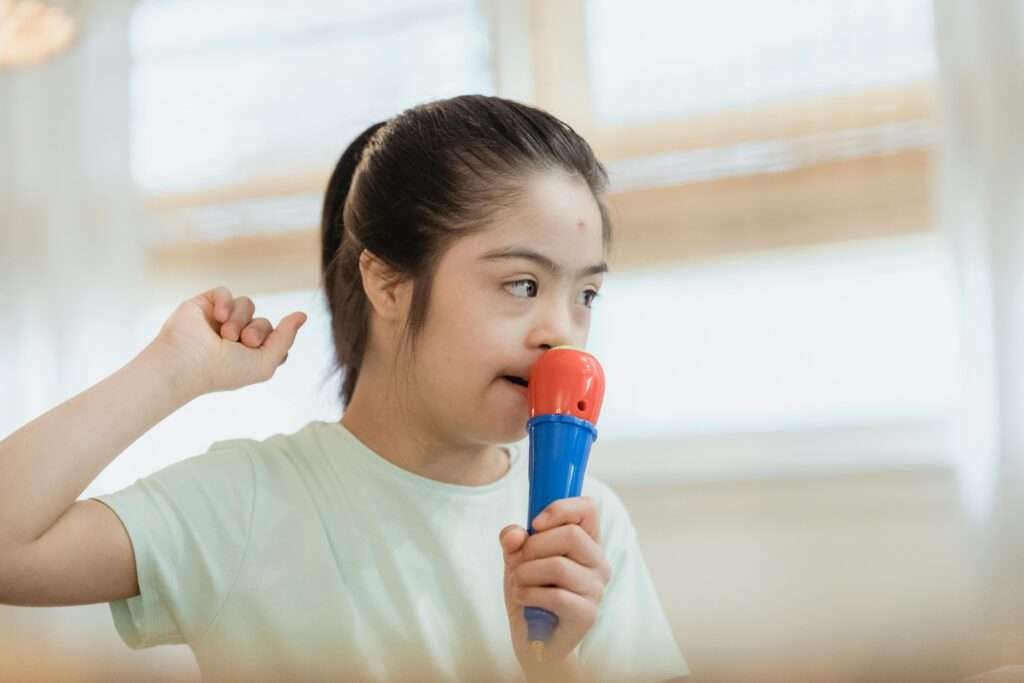
Understanding the Seating Needs of Down’s Syndrome Patients
When looking at the clinical seating needs of people with Down’s syndrome, there are some common physical characteristics that need to be considered.
Low Muscle Tone
Hypotonia, or low muscle tone can contribute to muscle weakness and a ‘floppy’ sitting posture.
Ligamentous laxity, the medical term for loose ligaments, increases joint mobility beyond the normal range of motion. This ‘hypermobility’ can further destabilise posture in the chair, calling for a range of postural interventions.
Poor Postural Stability
Studies have shown that individuals with Down syndrome exhibit decreased postural stability, which can affect their ability to maintain a stable sitting position.1-2
Poor postural stability can present in the form of posterior pelvic tilt and a kyphotic spine, making it harder to maintain an upright posture. Stability in the feet and pelvic areas are needed to keep an upright posture and prevent posterior pelvic tilt.
Seating Goals
Setting clinical goals is an essential part of the initial seating assessment. In the context of Down’s syndrome seating, these goals would include promoting a neutral postural alignment, preventing pressure sores, and supporting independence in the client’s daily routines and tasks.
Even physiological functions like breathing, circulation and digestion can be improved with the right seating.
For children and young people with Down’s, seating needs to accommodate growth, changing needs, and support their daily occupations and mobility needs.
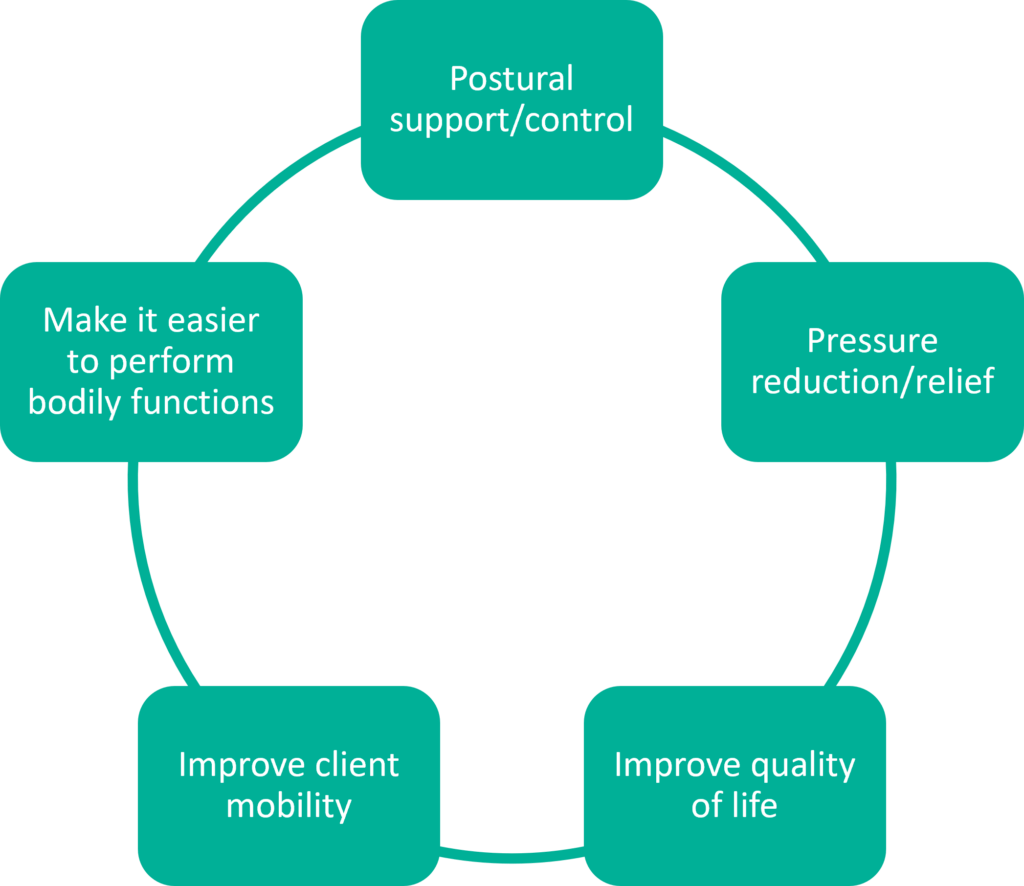
Key Features of Chairs for People with Down’s Syndrome
The range of seating features can be a bit of a minefield to navigate, so we have highlighted some of the key ones to look out for as part of your seating assessment.
Adjustable seat dimensions
Having adjustable seat width, depth and height is important for children with Down’s syndrome to ‘grow with the chair’, and is also very useful for multi-user environments where seat dimensions need to be quickly changed between different users.
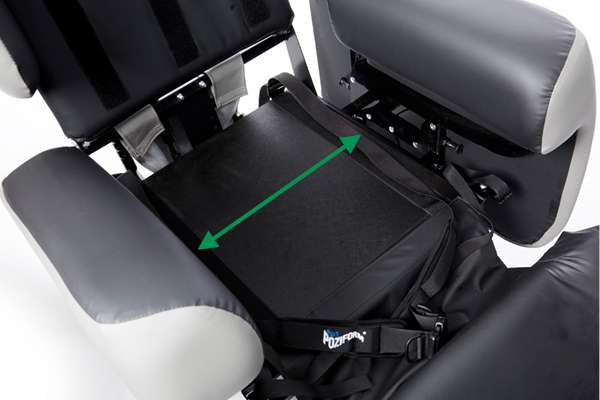
The Lento care chair has adjustable seat width so you can change the chair to match the person’s pelvic positioning if it changes over time.
Height adjustable armrests
Height-adjustable armrests are useful to accommodate different height tables and work surfaces for people with Down’s Syndrome, making desk-based activities easier. They also facilitate easier transfers in and out of the chair, for Down’s syndrome clients that struggle with mobility.
Lateral supports
Having lateral trunk support built into the chair helps counteract the ‘floppy’ posture that comes with low muscle tone.
This can extend up the trunk to the head, using a horseshoe head cushion or even a multi-link headrest for very hypertonic clients.
Good pressure relief
A combination of tilt-in-space and pressure-relieving upholstery provides the ultimate pressure relief in specialist care chairs for Down’s syndrome patients. Using dartex or other four-way stretch PU fabrics help wick away moisture, keep the surface of the skin cool and hydrated, which is ideal for washing when used with removeable cushions.
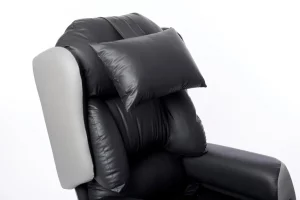
Dartex fabric
Positioning Aids
Sometimes, the use of a seat pommel or block can be needed for clients who tend to slouch or slide forward in the chair. Positioning aids should always be used in accordance with the protocol and in accordance with the client’s wishes; for more information on this subject read our blogpost about the benefits and risks of positioning aids.
Foot and Leg Support
Having the right support in the foot and leg area for clients with hypermobility helps promote a more upright posture in the chair, improving pressure relief and comfort.
Aesthetics and Design
Upholstering the chair in bright colours makes the chair more ‘fun’ for Down’s syndrome children and increases their attachment with the chair.
Our Agua ‘Paint Pot’ range has a collection of bright, vibrant colours that are great for kids, and we can personalise the outer fabric to their favourite football team or TV show, for example Marvel or Disney.

Paint Pot Colour Options
Recommended Chairs for Down’s Syndrome
Made to measure riser recliners
Ideal for the home, these can be tailored to the right size for the client, by taking their seat measurements and manufacturing the chair to the specified dimensions.
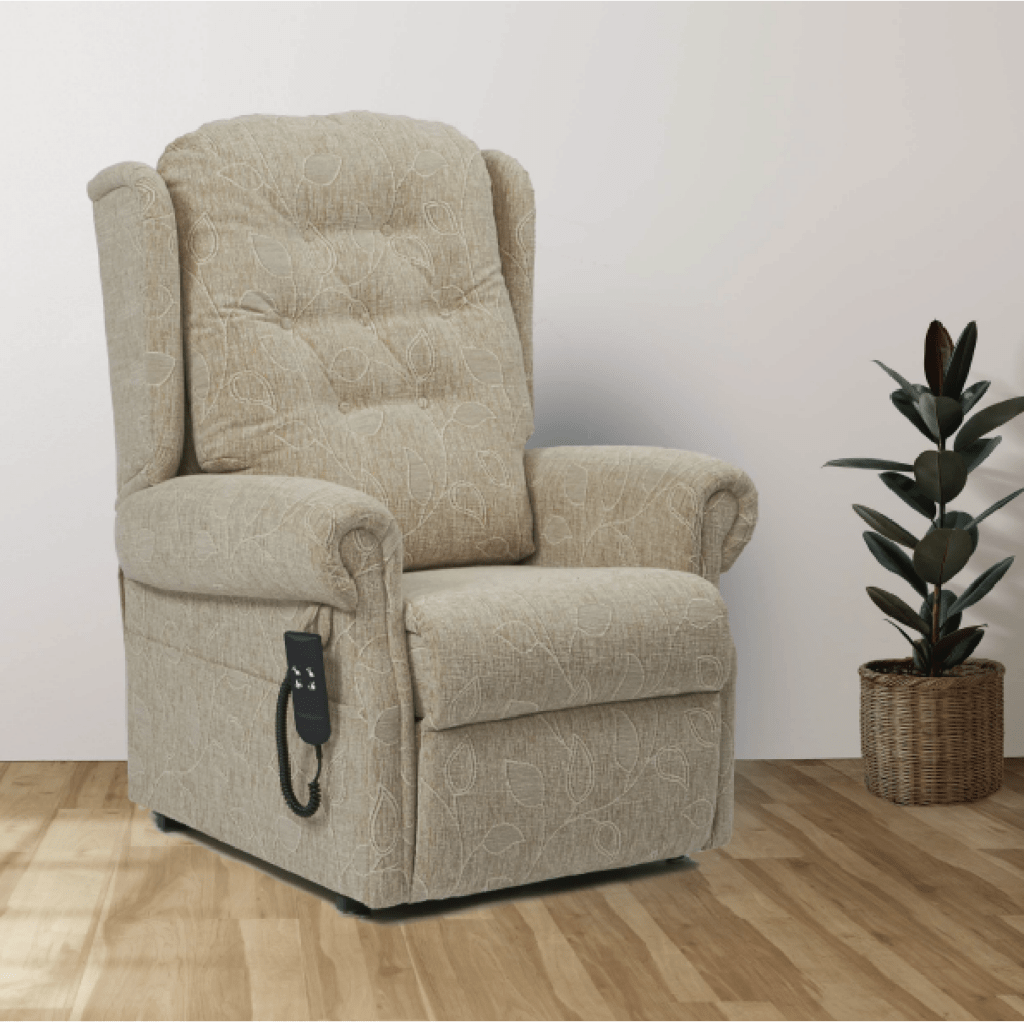
Little Lento care chair
For children and young adults up to 5’2”, this specialist care chair is great for assisted care facilities where people with Down’s syndrome live and work, such as sheltered accommodation or learning centres.
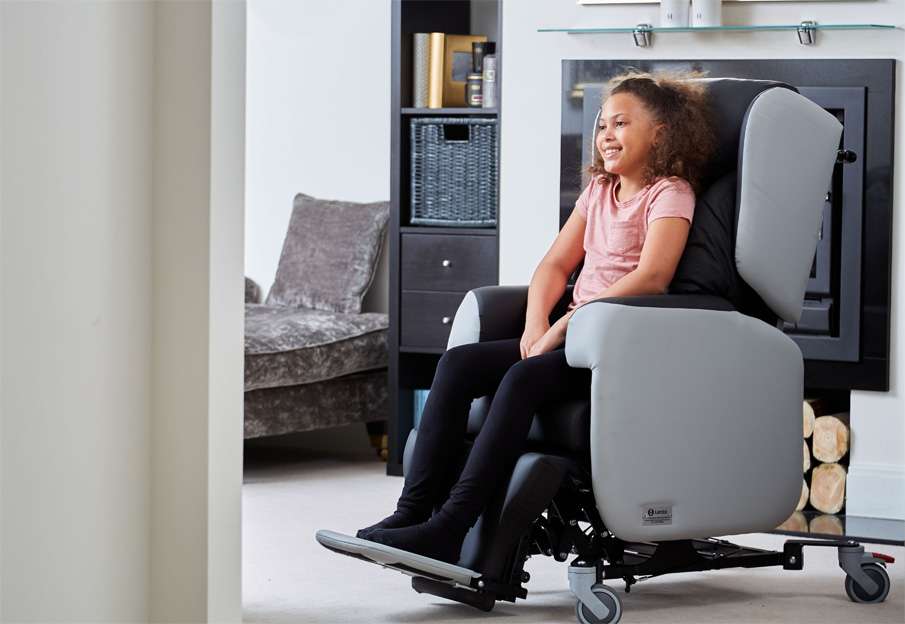
Lento Mobile riser recliner
The Lento Mobile is a hybrid between a riser recliner and a care chair, providing all the benefits of a riser recliner with the care and portability of a care chair. Ideal for older adults with Down’s who need full postural support and assistance with transfers, it is compatible with hoists and standaids.
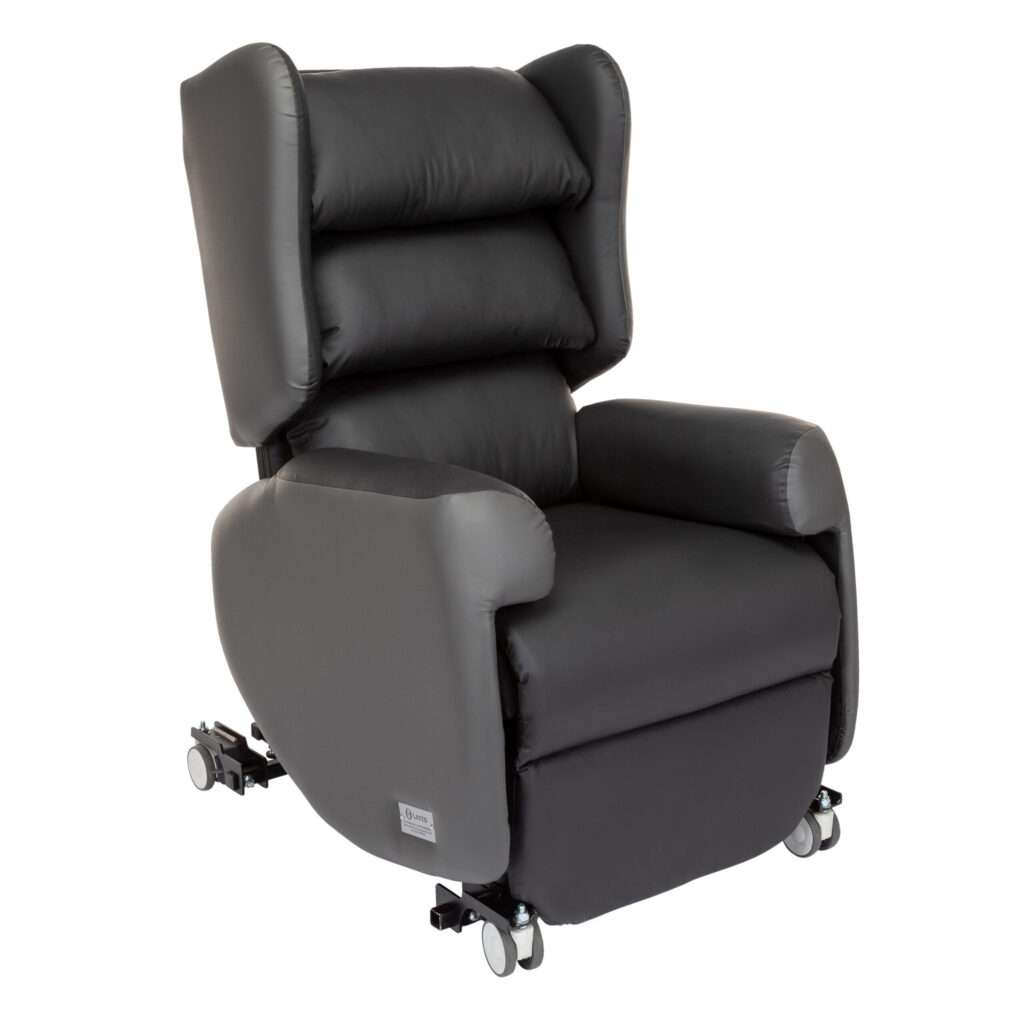
Lento Mobile riser recliner
Postural Accessories
Postural accessory packs are available with each of the chairs in our Lento range, such as headrests, lateral support, hip belts, and backrest cushions and wedges, that can be swapped and interchanged to create the right level of postural support for each client.
Clinical Tips for Specifying Down’s Syndrome Seating
It’s important to perform a face-to-face seating assessment with the client, to observe their posture in the chair and take measurements. Involve the client’s care team is crucial, to get their input on transfers and performing care routines.
Also, ensure that the chair fits in the context of the client’s environment, so it can fit in and around their daily tasks, for example under a desk if used at school. Check doorway widths and access for wheeled chairs.
Training caregivers on the use of the chair is essential to get the maximum benefit out of the chair, and ensure the functions are used in the correct way so as not to compromise the client’s posture.
Contact our seating specialists today to arrange a no-obligation assessment.
Or why not use our new Chair Selector Tool to get quick seating recommendations for your clients?
FAQs: Best Chairs for Down’s Syndrome
Q: Why is specialist seating important for people with Down’s Syndrome?
A: Individuals with Down’s Syndrome often experience low muscle tone (hypotonia), joint hypermobility, and poor postural stability. Specialist seating provides the postural support needed to promote comfort, function, and independence during daily tasks.
Q: What features should I consider in Down’s Syndrome seating solutions?
A: Look for features like adjustable seat dimensions, tilt-in-space, lateral trunk supports, pressure-relieving fabrics, foot and leg support, and height-adjustable armrests to suit both mobility and clinical needs.
Q: Are there chairs suitable for children with Down’s Syndrome?
A: Yes, chairs like the Little Lento care chair are designed to “grow with the child,” making them ideal for paediatric Down’s Syndrome seating in schools, therapy centres, and home environments.
Q: Can the chairs be customised for aesthetic or personal preference?
A: Some chairs are available in fun, bright upholstery options like the Agua Paint Pot range. Custom themes (e.g., Marvel or Disney) can boost user engagement, especially in children.
References
Brugnaro BH, Oliveira MFP, de Campos AC, Pavão SL, Rocha NACF.
Disability and Rehabilitation. 2022;44(11):2207-2222. doi:10.1080/09638288.2020.1830439.
Pauletti Oliveira MF, Resende Gâmbaro Lima C, Pavão SL, et al.
Perceptual and Motor Skills. 2023;130(1):386-402. doi:10.1177/00315125221133432.

